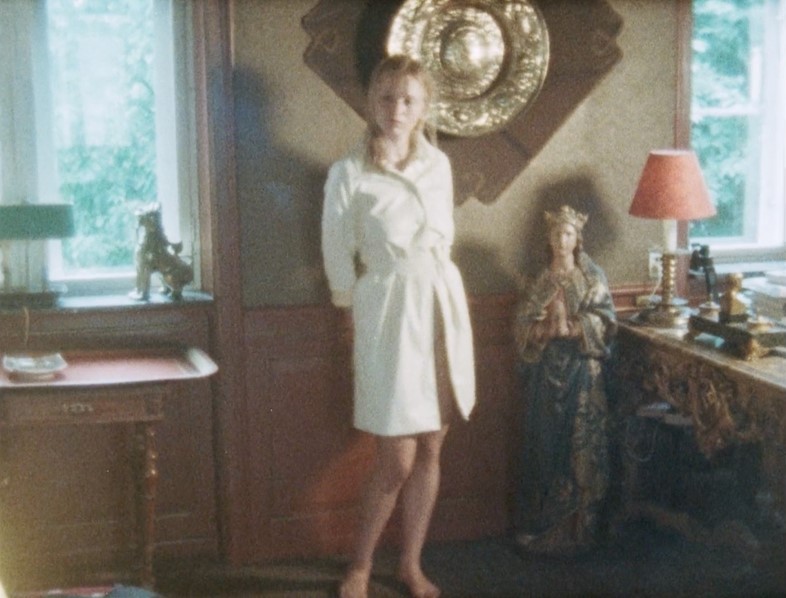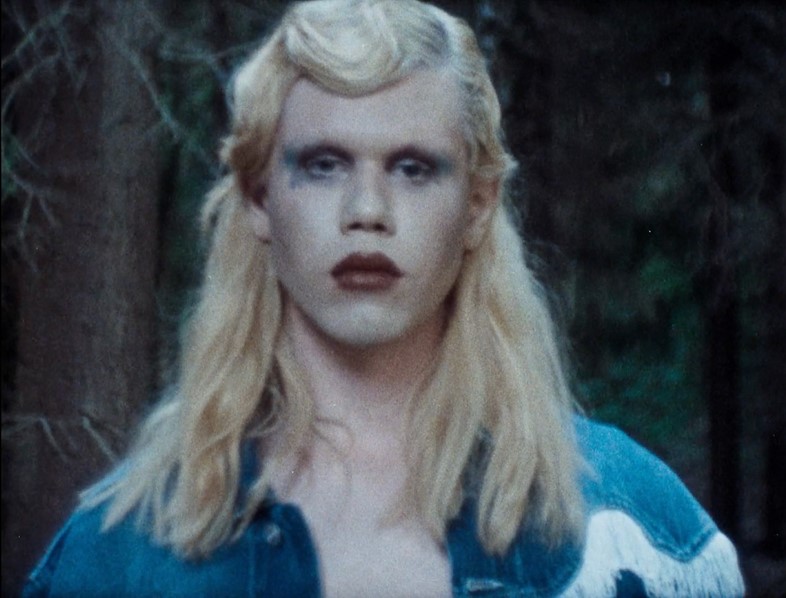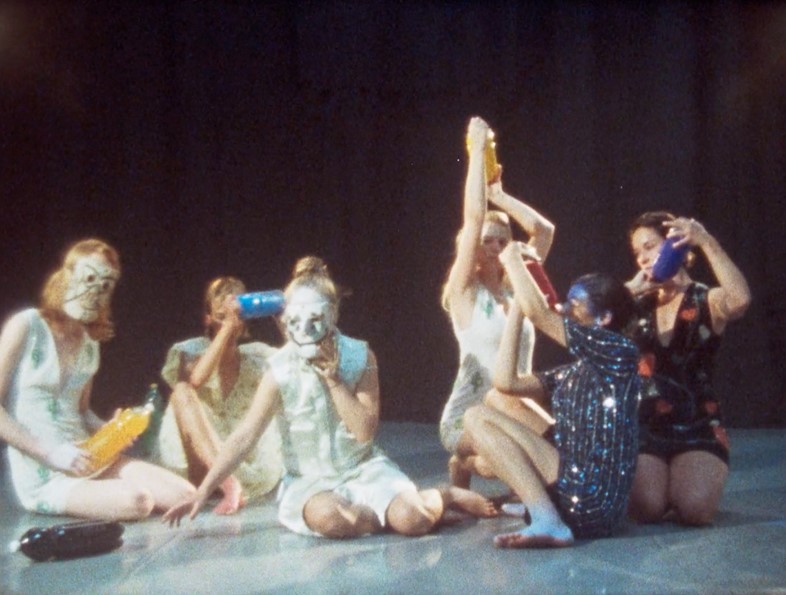As her short for Copenhagen-based label GANNI premieres on AnOther, the multi-hyphenate explains her visceral approach to filmmaking
GANNI“I hope they feel hypnotised,” says Danish artist Emma Rosenzweig of viewers of Yesterday, Today & Tomorrow, her new short film for Copenhagen-based label GANNI which premieres today on AnOther. A multi-hyphenate in the truest sense of the term – at once artist, filmmaker, actress, journalist and model, having recently starred in Balenciaga’s Fall 2017 campaign and show – Rosenzweig was approached by GANNI’s creative director and founder (and wife-husband duo) Ditte and Nicolaj Reffstrup to let her imagination loose on a short film, shot in her favoured medium: the Super 8 camera.
“The project began because GANNI and I shared an attraction to something unknown,” the Copenhagen native, who comes from a lineage of Danish filmmakers, explains. “To look at the superficiality of the fashion industry where everything is based on collections that come and go, and trying to show it as something else.” As such, the film – separated into three parts, ‘Yesterday’, ‘Today’ and ‘Tomorrow’, the titles drawn from an interlinking Italian triptych of films, Ieri, Oggi, Domani (1963), about love and relationships starring Sophia Loren – is a visceral exploration of the confines of fashion and femininity. (Rosenzweig has a particular interest in the latter, holding a regular salon in Copenhagen to discuss Simone de Beauvoir’s seminal feminist text, The Second Sex.) The result is a disorientating, visually immersive milieu of scenes: a road trip into Danish woodland by night, a game of dress up among the rooms of a bourgeois home and a masked interpretive dance sequence – all outfitted in GANNI’s collections, past, present and future.
Here, alongside the film’s premiere, Rosenzweig talks to AnOther about being attracted to the superficial, why it’s a challenge to shoot on Super 8 and how The Silence of the Lambs – and its antagonist Buffalo Bill – became unlikely inspirations for her experimental short.

On beginning with a vision...
“I had a vision of a boy in a car, driving away with a lot of clothes that he stole, driving to a forest only to put on the clothes and show it off for the trees and leaves – kind of like a crow showing off stolen treasures. I also wanted to show in a naive and childish manner the whole idea of the superficiality of the fashion industry where everything is based on collections that come and go.”
On the challenges of shooting on Super 8 film...
“It was really demanding to shoot and direct at the same time. And everything was shot analogue, on my Super 8 cameras – to look in the little lenses of these cameras can really give you a headache. But that’s also the fun part about it, and the fact that nobody can see what you are actually shooting, not even yourself. That is both the nerve-wracking and calming thing about it. If you fuck it up, you won’t know until it’s too late.”

On the power of clothing...
“I worked with Oliver Fussing who did the styling, and we decided to use old and new GANNI things because we wanted to get away from the situation where you are so tied to one collection. The clothes have a meaning because it’s a film where people wear clothes, and clothes are history – the characters in the films are representing people who have stories and their smells and tears and dirt make clothes the carrier.”
On unlikely inspirations...
“I have always had an interest in the murderer from The Silence of the Lambs and in some way this fascination followed me during the shooting of these films. This infantile person who dresses up and tortures a girl while caring more for a little dog...”

On working across disciplines...
“I study art at Städelschule in Frankfurt, where I work with images, words, sound and film. I have also been working as a model for a long time, and I used to do radio and run around in the streets with a dictaphone when I was a kid. Ever since I can remember I have been devoted and attracted by everything melancholic, nostalgic and superficial. I run a film club at Charlottenborg in Copenhagen where I invite artists from all over the world to make films on the same Super 8 analogue camera, and I have a salon at the art institution Gl Strand, also in Copenhagen, where I invite women to come and discuss the problems that Simone de Beauvoir took up in her book The Second Sex from 1949. So what I do, I guess, is in my own greedy way, sometimes I try to be a woman and sometimes I try to be a man, in my time, and using my situation and fascination by making things myself and listening to the walls speaking around me as well.”